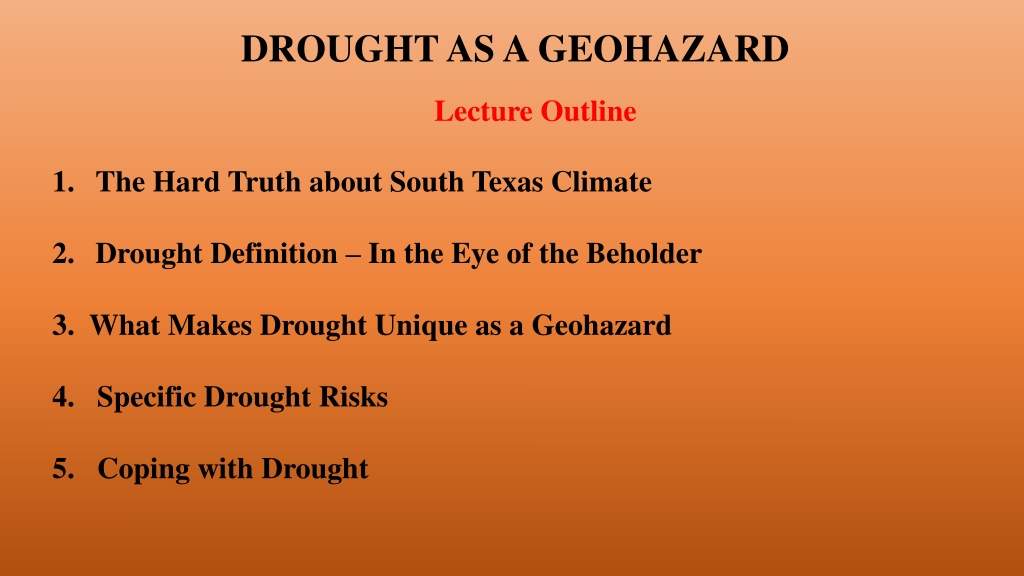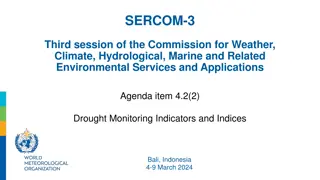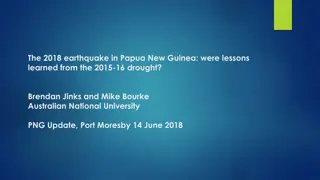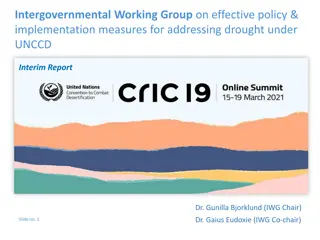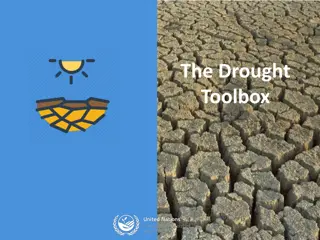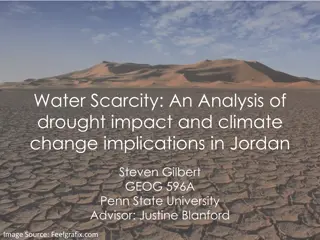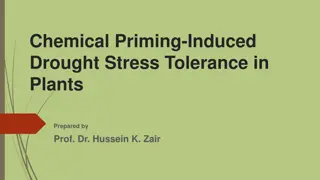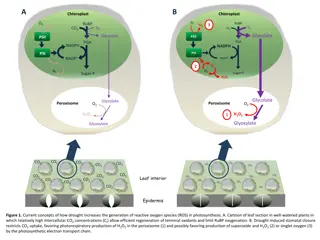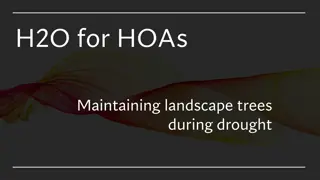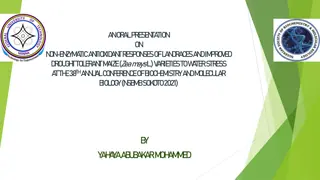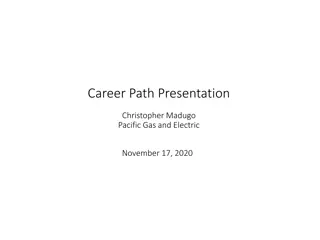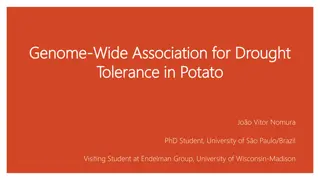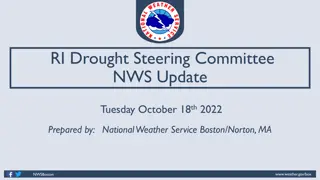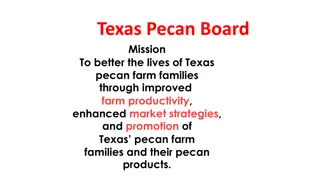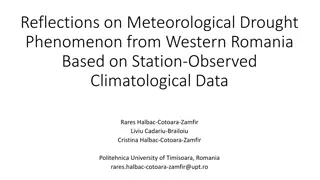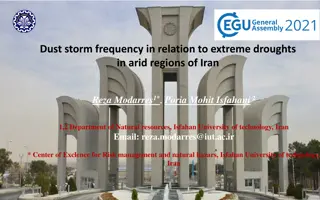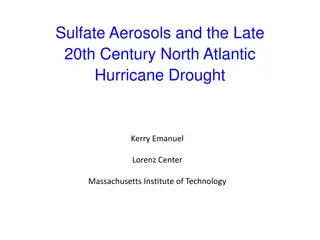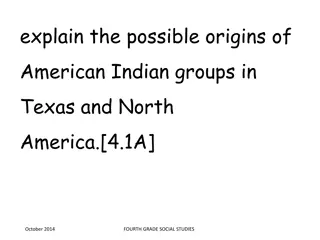Understanding Drought as a Geohazard in South Texas
South Texas faces chronic water scarcity due to its semi-arid climate, leading to frequent droughts. This lecture explores the unique characteristics of drought as a geohazard, its specific risks, and the societal impacts it can cause, including direct meteorological and hydrological effects, as well as indirect impacts like wildfires and loss of water quantity and quality.
Download Presentation

Please find below an Image/Link to download the presentation.
The content on the website is provided AS IS for your information and personal use only. It may not be sold, licensed, or shared on other websites without obtaining consent from the author. Download presentation by click this link. If you encounter any issues during the download, it is possible that the publisher has removed the file from their server.
E N D
Presentation Transcript
DROUGHT AS A GEOHAZARD Lecture Outline 1. The Hard Truth about South Texas Climate 2. Drought Definition In the Eye of the Beholder 3. What Makes Drought Unique as a Geohazard 4. Specific Drought Risks 5. Coping with Drought
1. The Hard Truth about South Texas Climate Climatically, South Texas is defined as having a semi-arid climate The definition of a semi-arid climate is: (a) A location where PET > P (b) Where average annual rainfall is less than 10 in /yr Rainfall in Laredo historically varies between 5 to 50 in /yr Needless to say that in most years South Texas experiences a chronic shortage of rainfall Drought is our constant companion
2. Drought Definition In the Eye of the Beholder A basic definition is an extreme environmental condition that is characterized by an absence of precipitation in the local and regional water cycle as a consequence of the physical interactions of elements of the atmosphere, hydrosphere, and lithosphere. There are several different types of drought: Meteorological Drought - Below normal rainfall (shorter-term) Agricultural Drought - lack of soil moisture to support ag activities (shorter-term drought) Hydrologic Drought - lack of surface and subsurface water resources (longer-term drought)
3. What Makes Drought Unique as a Geohazard SLOW ONSET DIVERSE IN LOCATION & DURATION DIFFICULT TO MEASURE THE SOCIETAL IMPACTS
4. Specific Drought Risks Direct Meteorological & Hydrological Impacts HIGH TEMPERATURES VERY LOW HUMIDITY LOSS OF SOIL MOISTURE VANISHING STREAMS, LAKES, AND WATER TABLES
4. Specific Drought Risks Indirect Impacts Drought is typically linked to wildfires, loss of water quantity and quality, and famine (sometimes). These linkages can lead to major loss of life of people and animals, loss of livelihoods, and loss of habitats. Loss of agricultural land (e.g., from desertification) Reductions in water quantity and quality
CAUSES OF RISK PROLONGED LACK OF PRECIPITATION LOSS OF SOIL MOSTURE LOSS OF AGRICULTURAL PRODUCTIVITY DEPLETION/POLLUTION OF GROUND WATER DROUGHTS LOSS OF VEGETATION INSECT INFESTATION LOSS OF AG. LAND FROM DESERTIFICATION
5. Coping with Drought In terms of facing future droughts there are four public policy options: MONITORING PREPAREDNESS ADAPTATION MITIGATION
5. Coping with Drought - Monitoring LONG RANGE WEATHER FORECASTS MONITORING TECHNOLOGIES (E.G., REMOTE SENSING) ANALYSIS OF PAST DROUGHTS
5. Coping with Drought Adaption / Preparedness Another proactive option for dealing with drought is to increase the public s general awareness of this issue. a. Augmenting water supplies - Next Friday s Lecture b. Promote water conservation (Need Public Buy-in) - Low Flow Toilets - Making the Choice to Use Less Water - Rainfall Harvesting. ??
5. Coping with Drought Mitigation Here are some reactive strategies to minimize drought impacts Conversation Credits Restricting Specific Uses Outright Prohibiting Specific Uses Rationing Water Service Outage (We all move to SA) Less Severe Most Severe
Summary 1. Drought is here to stay in South Texas. 2. We need a proactive strategy to wisely manage our limited water resources 3. Must have buy-in from public to be successful
